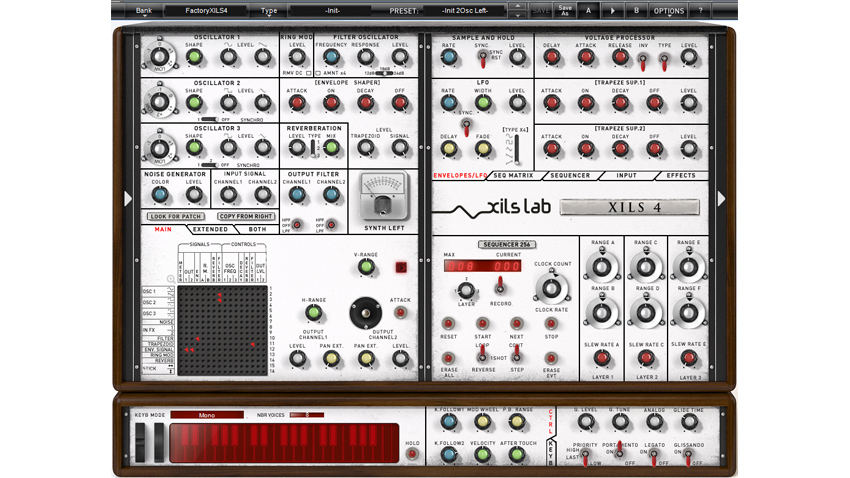New XILS 4 plugin synth emulates EMS VCS4 prototype
This 'double VCS3' is finally available to buy
We've seen plugin emulations of just about every classic synth ever brought to market, but XILS-Lab has now gone further down the vintage rabbit hole by releasing XILS 4, an emulation of the prototype-only EMS VCS4.
Developed in 1969 but never put on sale, the VCS4 effectively comprised two VCS3 synths (which XILS-Lab has already emulated in XILS 3), a five-octave keyboard, a mixer and a signal processing unit, all packed into a single wooden cabinet.
With XILS 4, you can set the two 'cores' to operate side by side or in serial (with one feeding the other). So, each and every module on one side can be used to modulate or feed anything on the other side. You can also apply settings to each patch pin individually, giving you all kinds of sound shaping potential.
Also included is the Sequencer 256 module, a second 'pin matrix', two additional envelopes, an LFO, a comprehensive sample and hold module, and a voltage processor. In addition, there are several new input modules including gate, envelope follower and pitch tracker.
XILS 4 includes a new library of 350 presets, as well as the full library from XILS 3. There are tutorial patches, too, which should help you to learn now to program this beast of a synth yourself.
XILS 4 is available now as an eLicenser or iLok copy-protected virtual instrument and effects plugin for an introductory discounted price of €149.00 (rising to €179.00 on 17 June 17). You can buy it from the XILS-lab website, where you can also find out more and download a demo.

Get the MusicRadar Newsletter
Want all the hottest music and gear news, reviews, deals, features and more, direct to your inbox? Sign up here.



I’m the Deputy Editor of MusicRadar, having worked on the site since its launch in 2007. I previously spent eight years working on our sister magazine, Computer Music. I’ve been playing the piano, gigging in bands and failing to finish tracks at home for more than 30 years, 24 of which I’ve also spent writing about music and the ever-changing technology used to make it.
“Excels at unique modulated timbres, atonal drones and microtonal sequences that reinvent themselves each time you dare to touch the synth”: Soma Laboratories Lyra-4 review
“A superb-sounding and well thought-out pro-end keyboard”: Roland V-Stage 88 & 76-note keyboards review









